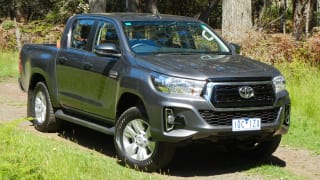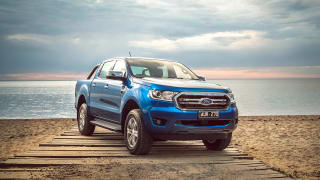It’s so edgy you could almost put square wheels on the Triton. The front end is truly aggressive, and to some it may look overly ridge and a bit nose-heavy.
The Triton’s new ‘Dynamic Shield’ front end divides opinion - for every supporter there’s a detractor. For me, the front end is great - but it looks better on a high spec dual-cab, or at the very least without the tiny looking (but actually not that small at 16-inches) steel wheels.

Unlike other markets, every Triton we get includes colour-coded bumpers. You might disagree, but I think the bulky dark grey plastic front bumper treatment would have looked even tougher. White paint is no cost, and on GLX you can only have it, Sterling Silver or Graphite grey (both of which add $590).
Everything from the bonnet back is the same as it was before. You can choose to fit a different tray, but our test vehicle was fitted with a genuine Mitsubishi alloy tray with fold-down sides that was simple to use.

But what happened to the good old days of utes that didn’t sit up so high? Tray load-in height for this model is 950mm - so loading in heavy items by hand (or jumping on to the back of the ute) is harder than it could be. Toyota still offers a low-set single cab model (HiLux Workmate), as does Isuzu (D-Max SX Low Rider) and Ford (Ranger XL Low-Rider). The Nissan Navara RX is slightly lower than the rest of its range, too.
While our version is the 4x2, it still has an excellent 30-degree approach angle and a 25-degree ramp-over angle, but the departure angle varies on the tray fitted. As for weight, this version is 1436 kilograms, with a huge 1284kg payload.




















